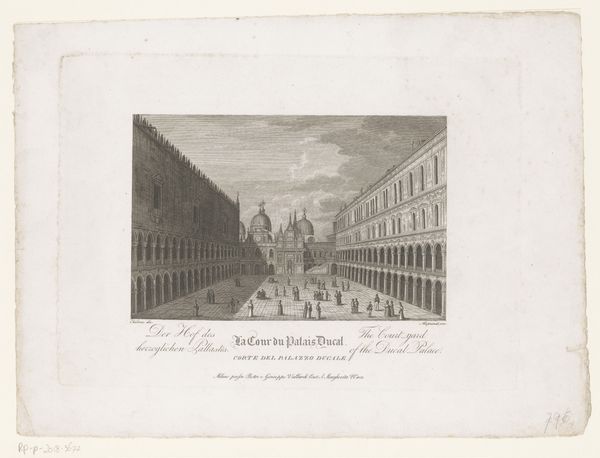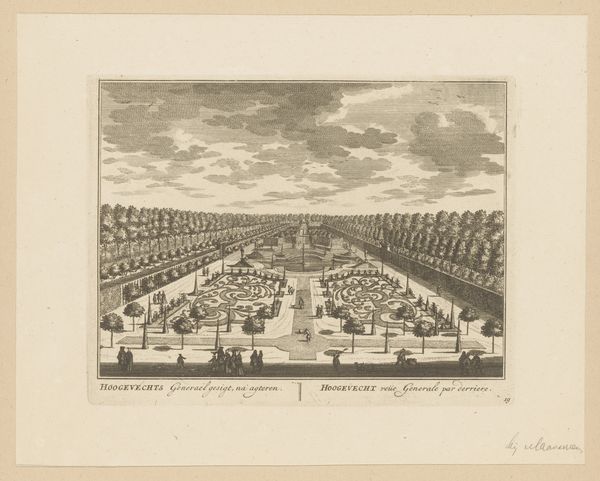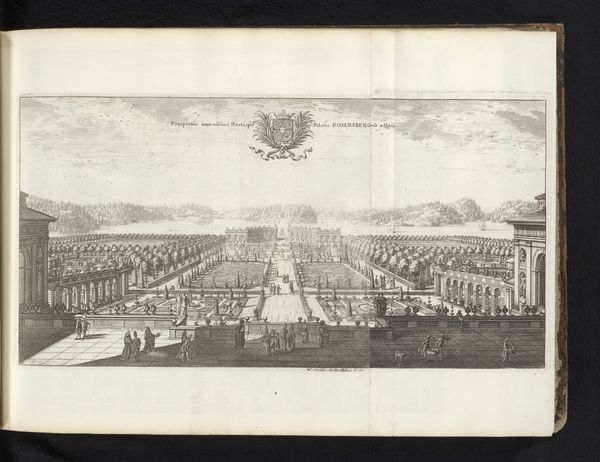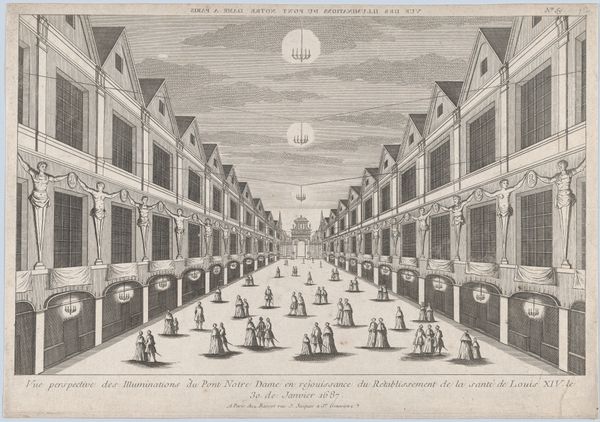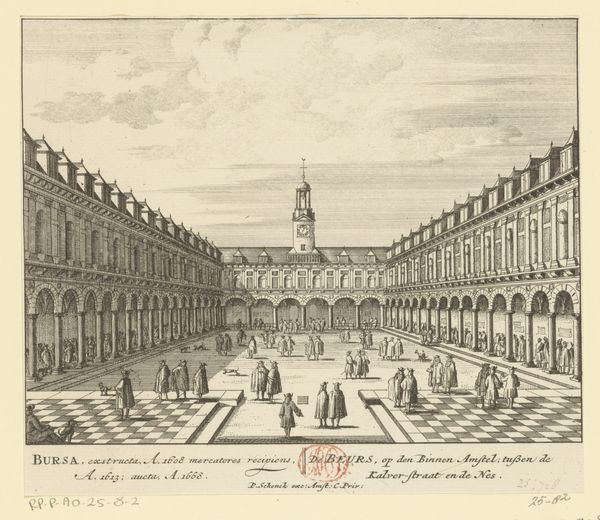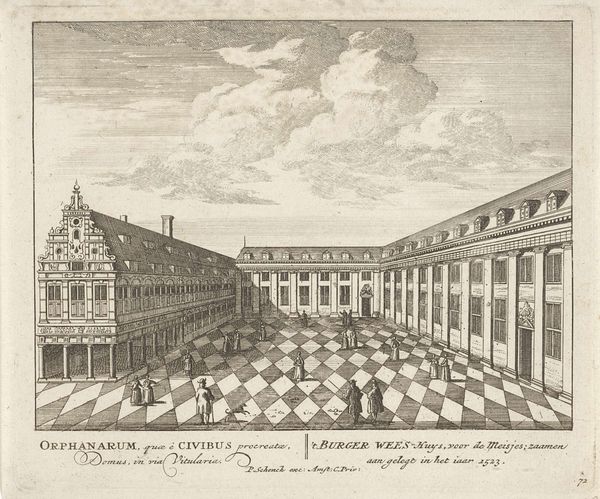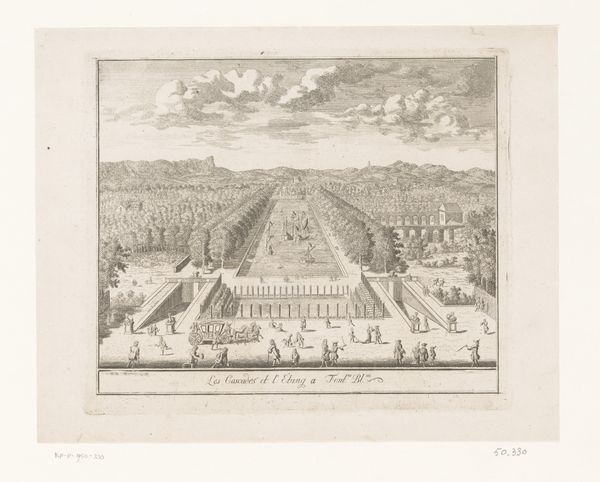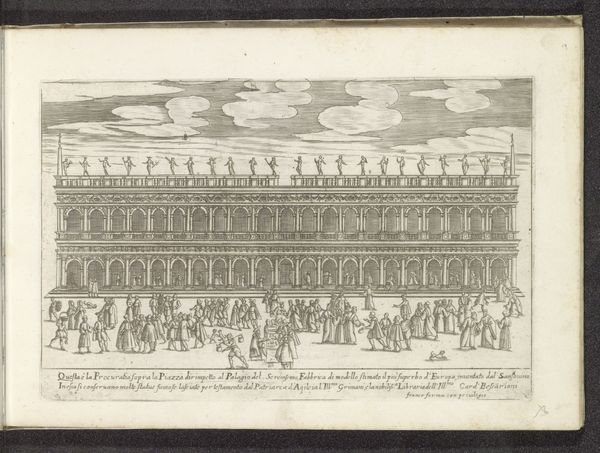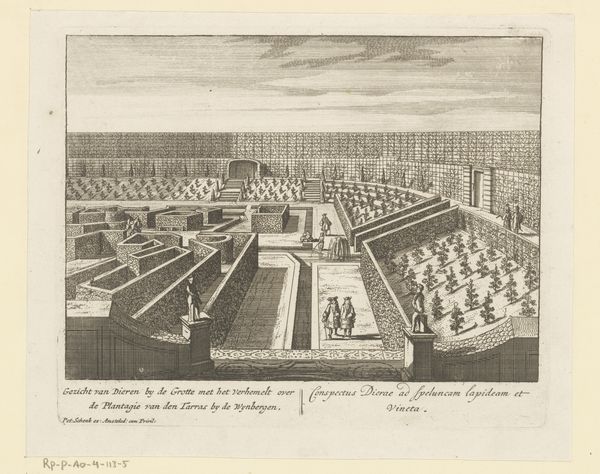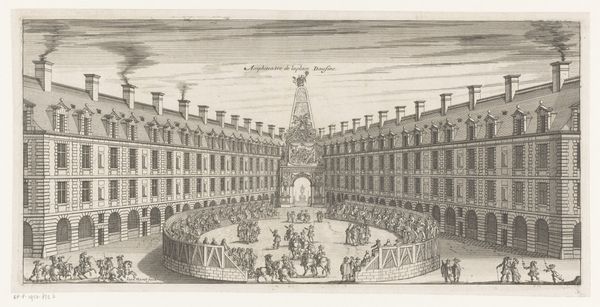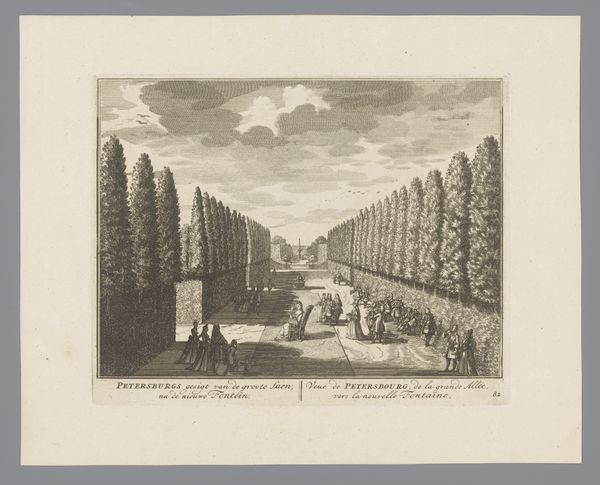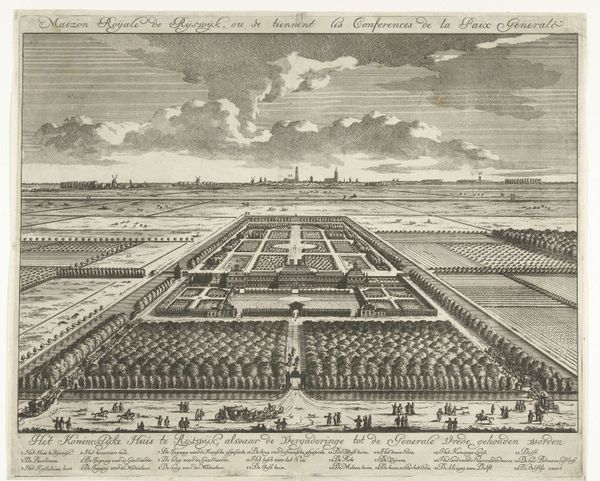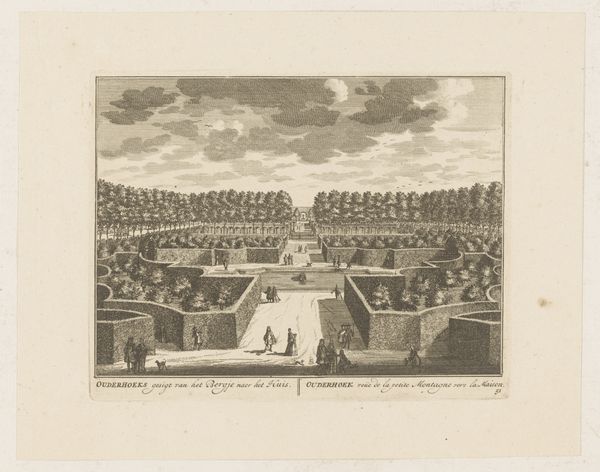
drawing, print, engraving, architecture
#
drawing
#
baroque
# print
#
perspective
#
geometric
#
line
#
cityscape
#
engraving
#
architecture
Dimensions: height 274 mm, width 385 mm
Copyright: Rijks Museum: Open Domain
Editor: This engraving, "Gezicht op de Pont Notre-Dame te Parijs," by Jean Marot, was created in 1662. The detail is astounding; it gives me the impression of peering down a never-ending corridor. What visual elements stand out to you? Curator: The rigorous application of linear perspective immediately commands attention. Observe how the receding lines of the buildings converge toward a vanishing point, creating a powerful illusion of depth on a flat plane. Editor: Yes, it’s very precise, but it almost feels… exaggerated? Curator: Indeed. Consider the treatment of architectural form. Marot meticulously renders the facades with repetitive geometric elements. The rhythmic succession of arches and pointed roofs establishes a pronounced visual order, yet also risks monotony. Editor: I see what you mean. The rigid structure is softened slightly by the figures populating the space. Do they contribute to the overall composition? Curator: Certainly. Though diminutive, these figures activate the foreground, providing scale and a sense of bustling urban life. However, note their somewhat stylized representation; they serve more as compositional accents rather than individualized portrayals. Ask yourself what effect this contrast in detail generates? Editor: It sets off the imposing architecture, amplifying the sheer scale of the bridge. I also see now how the clouds’ swirling lines soften the scene's sharp edges, generating dynamic tension with the strictly ruled geometric solids. Curator: Precisely. By balancing orthogonal structures with such organic touches, Marot avoids pure formalism, inviting a more nuanced appreciation of this urban vista. Editor: This analysis highlights elements of design that I missed initially; thanks, I appreciate this breakdown!
Comments
No comments
Be the first to comment and join the conversation on the ultimate creative platform.

